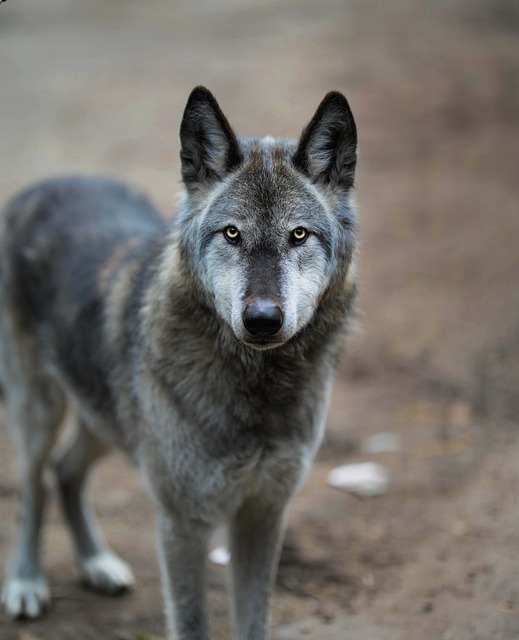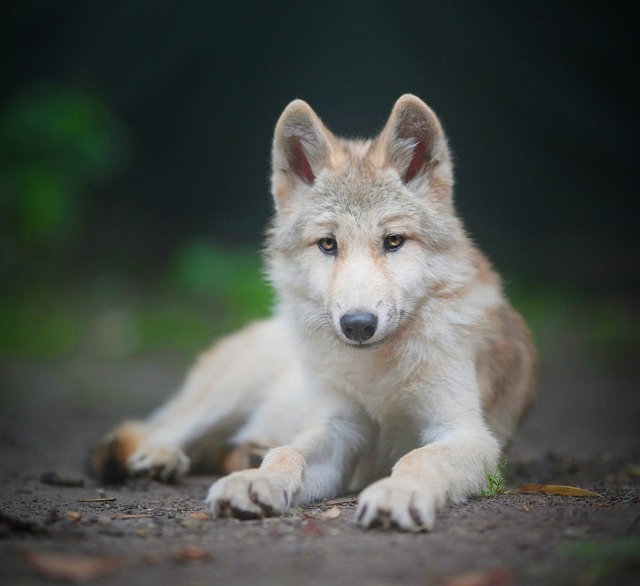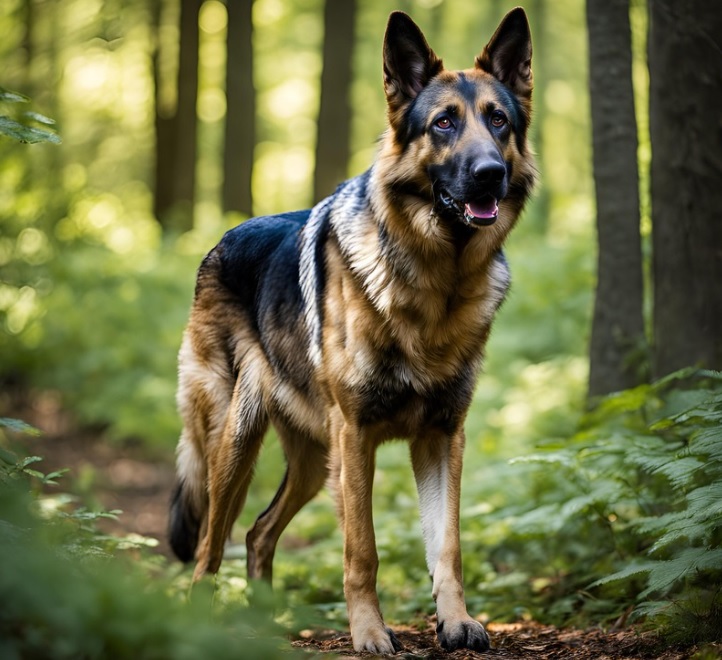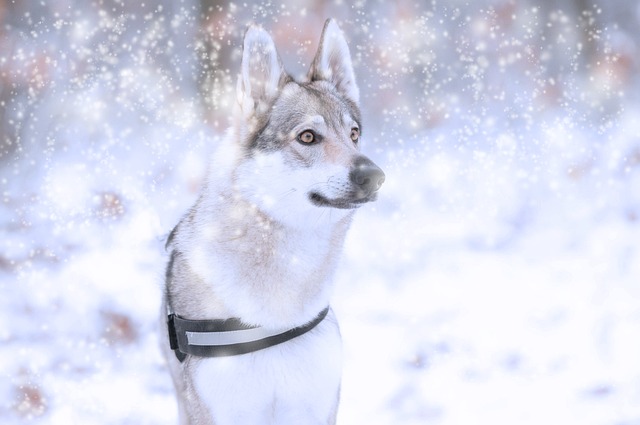Wolfdog, a hybrid between wolves and domestic dogs, have captivated people for centuries. They’re fascinating, complex animals with unique needs and characteristics. If you’ve ever wondered what it’s like to own a creature with the spirit of a wolf and the loyalty of a dog, the wolfdog might be exactly what you’re looking for. In this guide, you’ll discover everything you need to know about wolfdogs, from their history and breeds to myths, legal considerations, and more.
Key Takeaways
- Wolfdogs are unique hybrids with both dog and wolf traits.
- Their history spans thousands of years, and certain breeds like the Czechoslovakian and Saarloos wolfdogs were intentionally bred for specific roles.
- Wolfdogs have distinct needs and require experienced handling, as they’re more independent and cautious than domestic dogs.
- Legal and ethical considerations are crucial when thinking of owning a wolfdog, as they’re regulated in many places.
- They require high levels of physical and mental stimulation to thrive and can make rewarding pets for the right owner.
What is a Wolfdog?
A wolfdog is a hybrid animal that’s part wolf and part domestic dog. They come in varying percentages of “wolf content,” which refers to how much of their DNA is from a wild wolf. Some wolfdogs are closer to wolves, while others lean more toward domestic dogs in their behavior and appearance. This percentage impacts their behavior, temperament, and even their legal status in some areas.
Wolfdog History
Wolfdog history goes back thousands of years. Humans have been taming and breeding wolves for 15,000 to 30,000 years. Early domestication was a win-win: wolves got food and shelter, humans got hunting partners and guard dogs. Over time, selective breeding created domesticated dogs but the connection between wolves and dogs remained strong. Historical records from Europe, Asia and North America show that wolves and dogs would occasionally interbreed naturally and create early wolfdog hybrids that served functional and symbolic purposes in various cultures.
In modern times, specific wolfdog breeding programs emerged for specific purposes. In the 20th century. In the 1920s, the Saarloos Wolfdog was developed by a Dutch breeder who wanted to combine the wolf’s resilience with the German Shepherd’s trainability and create a hybrid for companionship and guarding. Later in the 1950s, the Czechoslovakian Wolfdog was developed in Czechoslovakia as part of a military experiment to create a working dog for border patrol. These hybrids were meant to enhance the stamina, physical abilities and sensory sharpness of traditional working breeds and combine traits of both wolves and dogs.
Today wolfdogs are popular among enthusiasts worldwide but are controversial because of their uniqueness and the laws in many places that restrict their ownership. Wolfdog populations are most common in the US and Europe where they are bred as working dogs and companions. Their complex lineage and varied traits require experienced handling as they often display both domestic and wild instincts. The history of the wolfdog is the human fascination with the wolf’s mystique and strength and the desire to use its abilities for practical purposes.
Most Popular Wolfdog Breeds
Several wolfdog breeds have become popular due to their looks, loyalty and versatility, each with their own history and purpose.
Czechoslovakian Wolfdog
One of the most well known is the Czechoslovakian Wolfdog, bred in the 1950s as part of a military experiment in Czechoslovakia, combining the endurance and strength of the Carpathian wolf with the intelligence and trainability of the German Shepherd. Known for their stamina and high energy drive, the Czechoslovakian Wolfdog has a wolf like appearance, dense coat, pointed ears and lean muscular body that can weigh up to 65 pounds. These wolfdogs are popular with experienced handlers, especially in search and rescue and police work due to their keen senses and focus.
Saarloos Wolfdog
Another breed is the Saarloos Wolfdog, born in the Netherlands in the 1930s when a Dutch breeder crossed a European wolf with a German Shepherd. With a tall athletic build that can weigh over 80 pounds, the Saarloos Wolfdog is known for their dignified gentle nature, but can be reserved or wary of strangers. This breed has a thick double coat in grey and brown, they look wild and rugged. Saarloos Wolfdogs are popular with owners who can provide plenty of outdoor space and regular exercise as they need mental and physical stimulation to stay balanced.
German Shepherd Wolf Mix
The German Shepherd Wolf Mix is another hybrid that combines the loyalty and protective nature of the German Shepherd with the independence and curiosity of a wolf. This mix has the German Shepherd’s black and tan coat pattern but with sharper facial features and more intense eyes. Known for their intelligence and high energy, the German Shepherd Wolf Mix is popular with those looking for a protective and active companion, but requires patient and firm training and regular exercise to prevent boredom.
Hybrid wolfdogs
Beyond these breeds there are many hybrid wolfdogs created by crossing wolves with breeds like Alaskan Malamutes, Siberian Huskies and other northern dog breeds. These hybrids come in all shapes and sizes and temperaments, often with strong predatory instincts and high endurance, they are popular with enthusiasts looking for a powerful but manageable animal that looks like their wild ancestors. Each wolfdog breed has their own mix of physical and behavioral traits and they all require dedicated and knowledgeable ownership due to their wild heritage and high energy needs.
Wolfdog vs Domestic Dog: What’s the difference?
Wolfdogs have a combination of traits that make them different from domestic dogs. They’re more independent, intelligent and wary of strangers. Domestic dogs have been bred for thousands of years to live with humans, wolfdogs still have many of their wild instincts. They’re harder to train and socialize and require experienced handling and knowledge of canine behaviour.
For instance, wolfdogs may not respond well to typical training methods and can be more reserved. Their needs for space, exercise, and mental stimulation are also usually higher than those of standard dog breeds.
Wolfdog Myths vs. Reality
Wolfdogs are often surrounded by myths, which can lead to misunderstandings. Let’s clear up some of the most common misconceptions:
- Myth: Wolfdogs are aggressive and dangerous.
-
- Reality: While wolfdogs can be cautious or even aloof, aggression isn’t a common trait. With proper training, they can be loving and loyal.
- Myth: Wolfdogs are impossible to train.
- Reality: Wolfdogs are intelligent but require patience and a unique training approach. They respond best to positive reinforcement and consistency.
- Myth: Wolfdogs are just like domestic dogs.
- Reality: Wolfdogs have specific needs that are different from regular dogs, including more exercise, mental stimulation, and experienced handling.
Legal and Ethical Aspects of Owning a Wolfdog: What You Need to Know
Since wolfdogs are part wild, they’re regulated in many places. Some states and countries have laws against wolfdog ownership. If you’re thinking of getting a wolfdog, you need to check local laws and make sure you’re allowed to have one. Ethically you need to understand the commitment involved as wolfdogs need a lot of care, space and mental stimulation.
Here’s a list of regions with specific laws or restrictions for wolfdog ownership:
United States
In the US, wolfdog ownership is regulated at state, county and even city level with laws ranging from complete bans to permits. The following states have restrictions or bans:
- Complete Bans: Hawaii, Connecticut, Georgia and New York have complete ban on wolfdog ownership. Owners in these states may face penalties if found to be keeping wolfdogs as pets.
- Permit Requirements or Regulations: Alaska, Delaware, Michigan, North Dakota, Pennsylvania and Massachusetts require special permits to own a wolfdog. Owners may need to show specific knowledge or have facilities that meet certain standards.
- Other Restrictions: Some states like California, Colorado and New Jersey allow ownership but have strict requirements on containment, vaccinations and special handling. These requirements vary depending on the percentage of wolf heritage in the animal.
In states without bans, regulations are often left to the county or municipal level where local ordinances may restrict or prohibit wolfdog ownership.
Canada
In Canada, regulations for wolfdog ownership vary by province. For example:
- Bans and Restrictions: Alberta and Manitoba have restrictions on higher-content wolfdogs (animals with higher percentage of wolf heritage). Generally, municipalities within these provinces regulate ownership, some cities have complete bans.
- Permits or Hybrid-specific Rules: British Columbia and Ontario allow wolfdogs with restrictions, often based on the wolfdog’s generational status and wolf content. Specific permits may be required for high-content hybrids.
Europe
In Europe, wolfdog regulations vary by country, many have strict rules for hybrids:
- Complete Bans: Norway, Sweden and Finland generally prohibit private ownership of wolfdogs, especially high-content wolfdogs due to concerns about the animal’s wild instincts and public safety.
- Permit Systems: Germany, Italy and France require permits for wolfdog ownership. These permits may involve facility inspections, behavioral evaluations and proof of specialized training. European regulations also vary depending on the breed and the wolf content in the hybrid.
- Specific Breed Exceptions: Some European countries like Czech Republic and Slovakia allow ownership of recognized wolfdog breeds (like Czechoslovakian Wolfdog) without restrictions as they are considered domesticated.
Australia
In Australia, wolfdog ownership is heavily restricted. Most states and territories have ban on wolfdog ownership, exotic pets and hybrids are generally not allowed. In New South Wales for example, wolfdogs are classified as restricted animals and private ownership is not permitted.
New Zealand
New Zealand prohibits the importation and ownership of wolfdogs, as they are classified as prohibited animals. This ban is part of the country’s stringent biosecurity measures to protect native species and manage potential risks from exotic animals.
Activities for Wolfdogs
Keeping a wolfdog happy and engaged requires activities that meet their high energy and mental needs. Here are some recommended activities:
- Hiking and Running: Wolfdogs love to run, so outdoor activities in large, enclosed spaces are ideal.
- Mental Enrichment Games: Puzzle toys, scent tracking, and training exercises keep them mentally stimulated.
- Agility Training: Many wolfdogs enjoy the challenge of agility courses and can benefit from the exercise and mental focus.
Some Interesting Questions for Wolfdog
1. What Dog Breed Is Closest to a Wolf?
The Czechoslovakian Wolfdog is widely regarded as the breed closest to wolves due to its direct lineage from Carpathian wolves. Created in the 1950s as part of a military experiment, this breed combines the strength and endurance of wolves with the trainability of German Shepherds. Siberian Huskies and Alaskan Malamutes also share close genetic ties to wolves and display similar physical traits, such as pointed ears, a dense coat, and a strong build.
2. How Big Is a Wolf Compared to a Dog?
Wolves are generally larger and more muscular than most domestic dogs. On average, an adult gray wolf stands about 26-32 inches at the shoulder and can weigh between 70 to 120 pounds, although some larger wolves can reach up to 175 pounds. In comparison, large dog breeds like the German Shepherd or Alaskan Malamute can be similar in height but often weigh less, averaging 60-100 pounds. Wolves tend to have longer legs, broader skulls, and larger paws than domestic dogs, contributing to their wild, powerful appearance.
3. What Dog Looks Like a Wolf?
Several dog breeds are known for their wolf-like appearance. The Siberian Husky and Alaskan Malamute are two of the most popular wolf-like breeds, with their dense coats, upright ears, and expressive eyes. The Czechoslovakian Wolfdog and Saarloos Wolfdog are even closer in appearance to wolves due to their wolf lineage. Other breeds, like the Tamaskan and Northern Inuit Dog, were specifically bred to look like wolves, making them visually similar to their wild ancestors without being true wolf hybrids.
4. Are Wolves Dangerous?
Yes, wolves may be dangerous, especially when they feel threatened or are defending their pack or territory. While wolves tend to avoid human interaction and are not naturally violent towards humans, they are wild animals with strong instincts. They have strong jaws, sharp fangs, and amazing speed, which allow them to defend themselves if necessary. Wolves rarely represent a threat to humans in their native habitat; but, caution should be maintained while approaching any wild animal, particularly those as powerful as wolves.
5. Are wolfdogs safe to keep as pets?
Wolfdogs can be safe pets for experienced owners who understand their unique needs and provide proper training and socialization.
6. What do wolfdogs eat?
Wolfdogs do well on a raw or high-protein diet similar to a wolf’s diet. Some owners use a mix of raw meat and high-quality kibble.
7. How long do wolfdogs live?
Wolfdogs typically have a lifespan of 12-15 years, similar to large dog breeds.






